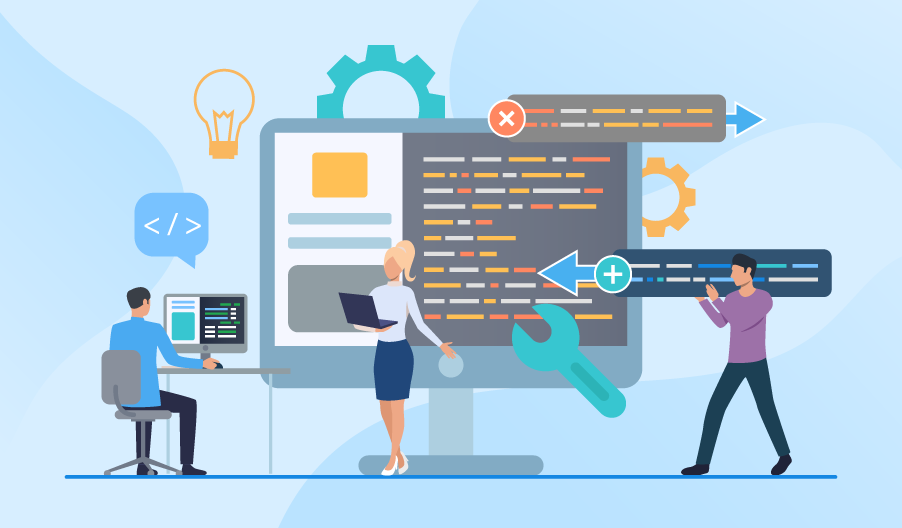In the ever-evolving world of technology, some applications become stuck in the past, like digital dinosaurs lumbering behind. These “legacy applications” have been around for a long time, often built on outdated technology and struggling to keep up with modern demands.
Common tell-tale sign of legacy applications
Technologically Outdated
Imagine building a house with 19th-century tools. That’s what legacy applications are like. They rely on old systems and perhaps programming languages, making them incompatible with today’s best practices and security standards.
Sluggish Performance
Need a quick response? Forget it. Legacy systems are notorious for being slow and inefficient, hindering productivity and frustrating users. Think dial-up internet in the broadband era.
Security Risks
Just like a house with crumbling defences, legacy applications are vulnerable to cyberattacks. Lack of updates and outdated security measures make them easy targets for hackers.
Costly to Maintain
Keeping these old systems running is like clinging to a vintage car that guzzles gas. The constant need for maintenance and support drives up costs, draining resources that could be invested in newer technologies.
Scaling Struggles
As your business grows, your software should too. But legacy applications are inflexible, struggling to adapt to increasing demands. Scaling them up is often expensive and challenging, like trying to stretch a piece of cloth beyond its limits.
Adaptability Woes
The business world is dynamic, but legacy applications are rigid. They can’t easily adjust to changing needs, hindering your ability to innovate and respond to new challenges. Think of trying to wear a suit of armor in a dance competition.
Knowledge Silos
Legacy applications often come with poorly written and undocumented code, creating knowledge silos within your organization. When employees move on, their successors are left struggling to decipher the cryptic code, slowing down progress and innovation.
Approach to modernize legacy application.
Legacy applications pose a significant challenge but fear not! There are strategies for dealing with them:
Rehosting
Rehosting is migrating an application to a new environment, whether it be the cloud or a virtual machine, involves the process of transferring it with little to no modifications to its underlying code. This approach offers several advantages. Firstly, it facilitates a swift transition, ensuring minimal downtime and disruption to operations. Additionally, it proves to be cost-effective, as it often requires fewer resources compared to more extensive overhauls. However, this method also comes with its drawbacks. It does not effectively address underlying technological challenges that may exist within the application. Furthermore, while it may provide some improvements, such as increased accessibility or performance, it generally offers limited enhancements in terms of scalability and security, leaving potential vulnerabilities unaddressed.
Replatforming
Replatforming involves transferring certain components of an application to a different platform while retaining its fundamental logic. This approach offers several benefits. It typically results in a quicker process compared to complete re-architecting, allowing for expedited implementation. Moreover, it has the potential to address performance issues and enhance security measures. However, there are drawbacks to consider. Replatforming may necessitate custom development work, adding complexity and potential costs to the project. Additionally, while it can provide improvements, it should be noted that it does not offer a comprehensive solution for modernization needs.
Refactoring
Refactoring involves the process of restructuring and optimizing the current codebase while preserving its core functionality. This method offers several advantages. It enhances the quality and maintainability of the code, potentially leading to improved performance. However, there are certain drawbacks to consider. Refactoring can be time-consuming, demanding a thorough understanding of the codebase. Additionally, it may not fully resolve underlying architectural issues within the system.
Rearchitecting
Re-architecting entails a comprehensive overhaul of the application architecture, utilizing modern technologies and adhering to best practices. This approach offers several benefits. It provides the most thorough solution, effectively tackling all technical challenges and ensuring the creation of a resilient, future-ready system. However, there are notable downsides to consider. Re-architecting is a time-consuming process that often incurs high expenses. Moreover, it carries a significant risk of introducing new bugs or errors into the system during the transition period.
Encapsulation
Encapsulation involves surrounding the legacy application with a fresh API layer, which exposes its functionalities to contemporary systems. This approach offers several advantages. It effectively isolates the legacy system, enhancing security and facilitating smoother integration with modern infrastructure. Additionally, it provides a temporary solution, allowing for time to make future decisions. However, there are drawbacks to consider. Encapsulation does not directly address internal technical issues within the legacy system and may pose challenges in terms of complexity during implementation and ongoing maintenance.
Other considerations:
Incremental strategy: Initiate with smaller, less risky projects to acquire expertise and build momentum.
Blended strategy: Integrate various tactics tailored to individual application components and requirements.
Utilize vendor offerings: Evaluate pre-existing tools and frameworks tailored for legacy modernization purposes.
Obtain professional guidance: Engage experienced IT specialists to evaluate your unique circumstances and suggest the optimal strategy.
Remember, legacy applications are just that – a legacy. Don’t let them hold you back. Embrace the future of technology and unlock the potential for agility, security, and growth in your organization. There is no one-size-fits-all answer. To carefully evaluate your options and choose the approach that best aligns with your business goals and technical constraints contact Simplified Solutions.
See Application Reengineering page on https://simplifiedsol.co.uk/application-re-engineering/ for case studies from our trusted customers.




